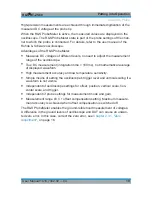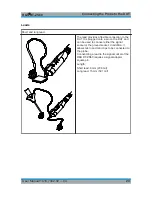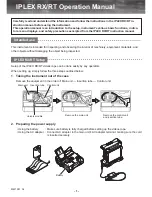
Connecting the Probe to the DUT
R&S
®
RT-ZS60
20
User Manual 1418.7342.02 ─ 04
3
Connecting the Probe to the DUT
This chapter describes the different ways of connecting the probe to the DUT. In
addition, the usage of the supplied accessories is explained.
To achieve optimum RF performance, the connections must be as short as possi-
ble. If long connections cannot be avoided, they have to be preferably used for
the ground socket.
Risk of injuries
The included probe pins are exceptionally sharp and must be handled with
extreme care. To prevent injuries, always use tweezers when inserting or
removing pins.
Some solder-in accessories are very fine and sensitive. Stabilize the probe
using appropriate means (e.g. adhesive pads, probe positioner) in order to
protect the solder joint from excessive mechanical stress.
Pins
Signal pin and ground pin, pogo
Using the signal pin and ground pin, manual
measurements can be performed without or
with only minor limitation of the measurement
bandwith. Best results are achieved if the dis-
tance between signal and ground is small.
Even with maximum distance, rise times
shorter 70
ps can be reached.
Because the spring-loaded ground pin com-
pensates for minor unevenness and move-
ments, this pin can establish a firm contact
with the test point. It fits into the ground socket
of the probe head.
The distance to the signal pin can be varied by
turning the ground pin.
Distance range:
0 mm to 10 mm (0 mil to 400 mil)
















































